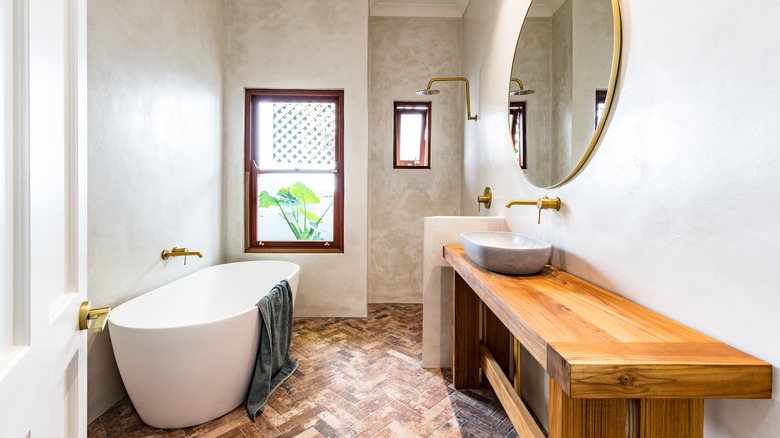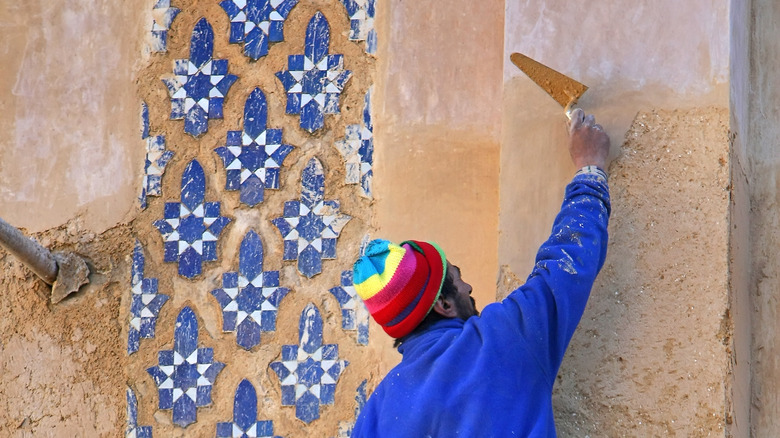Here's Everything We Know About The Newest Design Trend On The Rise: Tadelakt
While it has recently gained a lot of popularity in the design world, tadelakt is actually an ancient plastering technique that originated in Morocco. It was used to preserve bathhouse walls from water damage but is now used to waterproof and decorate walls, ceilings, and other surfaces in the home. The technique involves applying multiple layers of plaster made from a mix of hydraulic lime and fine sand that is typically pigmented to create a soft but enduring texture.
Because it looks and feels good to the touch, tadelakt has become a modern interior design trend, especially in eco-friendly circles due to its natural materials and traditional craftsmanship. Being applied by professional artisans makes each application a unique, personalized process. It also appeals to lovers of contemporary design because it is minimalist and stylish. Incredibly low maintenance, regular cleaning with water and resealing with olive oil soap is usually enough to maintain the appearance of tadelakt for a long time.
Designing with tadelakt
This plaster technique continues to be admired and embraced by designers and homeowners that seek classic and unique aesthetics. Tadelakt is often used in bathrooms, kitchens, and other high-humidity areas, but it can also be applied to accent walls or artistic features. It works both indoors and outdoors and in various colors. You can find it in shades of white, gray, blue, and earthy hues.
One practical perk of tadelakt is that it's easier to clean than tile since it's seamless and absent of grout lines. One style perk is that it allows you to get away with a basic color scheme since it maintains visual interest. "White becomes very flat if you don't incorporate texture," says interior stylist Romi Weinberg, who used this material in her all-white home (via Homes To Love). If you don't want it slathered on the walls, you can use tadelakt to create benches, seats, sinks, vanities, and shelves. It can also be used on floors, but only in indoor spaces where shoes won't be used.
Things to note
While tadelakt is a versatile and popular plastering technique, it requires a lot of time and effort. Unless you have the patience to take on this kind of project, it isn't really friendly to amateur DIYers. The materials are expensive, the process is long, and it requires specific tools. It is also a hassle to replace in case of any damage because it is all connected and can't be fixed in parts. One tip is to use tadelakt only in a few crucial areas and standard lime plaster in the rest.
Another thing to note is that the waterproof quality of this Moroccan-style finish comes from the application and sealing process. This is also why it's important to hire experienced artisans to apply it because they have the expertise and will be confident in the process. They can make it smooth and free of streaks, seal it so it can last, and advise you on how to take care of it.

